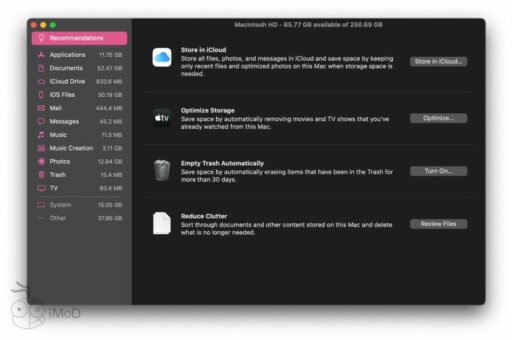Table of Contents
Bivariate and multivariate data analysis represent critical methodologies in the realm of statistics, offering nuanced insights into the relationships between two or more variables. This exploration delves into the intricacies of such analyses, from foundational concepts to advanced techniques, and discusses their practical applications across various fields. It also considers the challenges and ethical considerations that arise when dealing with complex data sets.
Key Takeaways
- Bivariate data analysis is a stepping stone to multivariate analysis, providing a more comprehensive view of variable interactions.
- Multivariate regression analysis is pivotal for examining relationships involving multiple independent and dependent variables.
- Techniques like multiple regression, factor analysis, and cluster analysis are essential for simplifying and interpreting complex datasets.
- Real-world applications of multivariate analysis span numerous fields, aiding in pattern recognition, prediction, and strategic decision-making.
- Challenges in multivariate analysis include dealing with multicollinearity, ensuring data quality, and adhering to ethical standards.
Understanding the Fundamentals of Bivariate Data Analysis


Defining Bivariate Data
Bivariate data analysis is a type of statistical analysis that focuses on the relationship between two variables. It is the cornerstone of understanding how one variable may affect or relate to another. This form of analysis is essential in fields ranging from economics to medicine, where it is crucial to understand the interplay between different factors.
Bivariate data can be contrasted with univariate data, which involves only a single variable, and multivariate data, which examines more than two variables. The table below illustrates the differences between these types of data:
| Data Type | Variables | Analysis Type |
|---|---|---|
| Univariate | One | Individual variable examination |
| Bivariate | Two | Relationship exploration |
| Multivariate | More than two | Joint influence and interactions |
Bivariate analysis not only reveals simple associations but can also hint at causal relationships under the right conditions.
Understanding bivariate data is the first step towards more complex analyses. As we delve into the intricacies of bivariate relationships, we pave the way for multivariate analysis, which can uncover deeper insights into the dynamics between multiple variables.
Comparing Univariate and Bivariate Analysis
In the realm of data analysis, the distinction between univariate and bivariate analysis is foundational. Univariate analysis focuses on a single variable, seeking to describe its distribution, central tendency, and variability. In contrast, bivariate analysis examines the relationship between two distinct variables, aiming to uncover any correlation or causative link between them.
The following table summarizes key differences:
| Aspect | Univariate Analysis | Bivariate Analysis |
|---|---|---|
| Number of Variables | One | Two |
| Purpose | To describe the characteristics of a variable | To explore the relationship between variables |
| Example | Analyzing the age distribution of a population | Investigating the correlation between age and income |
While univariate analysis provides a snapshot of individual variables, bivariate analysis begins to reveal the tapestry of relationships that exist within data.
Understanding when to apply each type of analysis is crucial. Univariate analysis is often the starting point, providing a clear understanding of each variable before moving on to explore their interactions. Bivariate analysis, however, is the gateway to more complex multivariate techniques, which consider multiple variables simultaneously.
Visualizing Bivariate Relationships
Visualizing bivariate relationships is a pivotal step in understanding the intricate dynamics between two variables. Effective visualization techniques can unearth patterns and insights that might be obscured in raw data. There are several methods to visualize such relationships:
- Scatter plots, which display individual data points and can reveal the nature of the relationship, whether linear, non-linear, or non-existent.
- Line graphs, often used to illustrate trends over time between two variables.
- Bar charts, which can compare categorical data across two dimensions.
One of the key advantages of visualizing data is the ability to quickly identify outliers or anomalies that could indicate errors or important discoveries. For instance, a scatter plot may show a cluster of data points with a distinct point far removed from the group, prompting further investigation.
By integrating visual elements into data analysis, we facilitate a more intuitive understanding of complex relationships.
It’s also crucial to select the appropriate visualization tool based on the data’s characteristics and the analysis goals. The SethT website offers content on web development, business intelligence, and data topics including Python, R, and data visualization tools.
Techniques in Bivariate Data Examination


Correlation and Covariance Analysis
In the realm of bivariate data analysis, correlation and covariance are fundamental concepts that measure the relationship between two variables. Correlation, often calculated using the Pearson product-moment correlation coefficient, quantifies the strength and direction of the linear relationship between variables. Covariance, on the other hand, provides a measure of how much two random variables vary together.
Correlation coefficients range from -1 to 1, indicating perfect anti-correlation, no correlation, and perfect correlation, respectively. Covariance values are not standardized, making them less intuitive to interpret without context.
Understanding these measures is crucial for identifying potential interactions and dependencies in data. For instance, in gene expression networks, correlation analysis can help in identifying co-regulated genes. However, it is important to note that correlation does not imply causation and may miss non-linear relationships. The selection of appropriate dependence measures is essential to accurately capture the dynamics of the data.
Regression Models for Bivariate Data
In the realm of bivariate data analysis, regression models are pivotal in understanding the relationship between two variables. These models aim to predict the value of a dependent variable based on the value of an independent variable. The simplest form of bivariate regression is the linear regression model, which assumes a straight-line relationship between the two variables.
The essence of bivariate regression lies in its ability to provide a quantifiable measure of the strength and direction of the relationship between variables.
When constructing a regression model, several statistics are crucial in evaluating its effectiveness:
- The slope of the regression line indicates the rate of change in the dependent variable for each unit change in the independent variable.
- The intercept represents the expected value of the dependent variable when the independent variable is zero.
- The coefficient of determination, or R-squared, reflects the proportion of variance in the dependent variable that can be explained by the independent variable.
These components are encapsulated in the regression equation: Y = a + bX + e, where Y is the dependent variable, X is the independent variable, a is the intercept, b is the slope, and e is the error term. The goal is to minimize the error term, which represents the difference between the observed and predicted values.
Contingency Tables and Chi-Square Tests
Contingency tables, also known as cross-tabulation or crosstab, are a powerful tool for summarizing the relationship between two categorical variables. They provide a frequency distribution table that displays the number of observations in each category, making it easier to observe patterns and associations.
Chi-square tests are used to determine whether there is a significant association between the two variables. The Chi-square test for independence is particularly useful when dealing with bivariate categorical data. It tests the null hypothesis that the variables are independent of each other.
When interpreting the results of a Chi-square test, it’s important to consider the degrees of freedom and the expected frequencies. A significant result suggests that the variables are related, but it does not imply causation.
Here is an example of a contingency table:
| Outcome 1 | Outcome 2 | Total |
|---|---|---|
| Count (A) | Count (B) | A + B |
| Count (C) | Count (D) | C + D |
| A + C | B + D | N |
In this table, ‘A’ represents the count of observations for Outcome 1 in Category 1, ‘B’ for Outcome 2 in Category 1, and so on. The total ‘N’ represents the sum of all observations. The Chi-square test will compare the observed counts to the expected counts under the assumption of independence.
Multivariate Analysis: Beyond Bivariate Exploration


Introduction to Multivariate Regression Analysis
Multivariate regression analysis marks a significant leap from its bivariate counterpart by considering multiple dependent variables simultaneously. This approach is crucial in fields with intricate variable interactions, as it allows for a more comprehensive understanding of the data. It provides insights into how various independent variables collectively influence multiple outcomes.
In practice, multivariate regression can be applied to a wide range of disciplines, from social sciences to medical research, where the complexity of the data requires a robust analytical framework. For instance, in healthcare studies, it might be used to predict patient outcomes based on a combination of factors such as age, treatment type, and pre-existing conditions.
The transition from bivariate to multivariate analysis represents a move towards a more nuanced exploration of data, where the interplay between variables can be fully appreciated.
A typical multivariate regression model might include variables such as:
- Independent Variables: Age, Income, Education Level
- Dependent Variables: Health Outcome, Job Satisfaction, Quality of Life
Understanding the output of such models is critical for making informed decisions and predictions. The complexity of these models necessitates a solid grasp of statistical principles and the ability to interpret the results accurately.
Breaking Down Multivariate Analysis of Variance (MANOVA)
Multivariate Analysis of Variance, or MANOVA, is a statistical test that extends beyond the scope of ANOVA by evaluating the influence of one or more independent variables on multiple dependent variables at the same time. It is particularly beneficial when these dependent variables are correlated, as it utilizes this relationship to yield more comprehensive insights.
The process of conducting a MANOVA involves several steps, including checking assumptions, selecting a design, and interpreting the results. Here’s a simplified overview:
- Verify the assumptions of normality and homogeneity of variances.
- Choose an appropriate experimental design based on the research question.
- Calculate the MANOVA statistic and associated p-values.
- Interpret the results in the context of the research hypothesis.
MANOVA’s capability to assess multiple outcomes simultaneously makes it a robust tool for complex data analysis, providing a deeper understanding of the data by revealing patterns and interactions that may not be apparent with univariate methods.
Advanced Topics in Multivariate Analysis
As the field of statistics evolves, multivariate analysis continues to expand its horizons, offering deeper insights into complex datasets. Advanced topics within this area, such as multivariate time series analysis, applied techniques, and pattern analysis, provide powerful tools for interpreting the interactions between multiple variables over time and across various contexts.
Applied multivariate statistical analysis encompasses a range of techniques aimed at solving real-world problems by analysing datasets with multiple variables. Techniques such as Principal Component Analysis (PCA), Canonical Correlation Analysis (CCA), and Discriminant Analysis (DA) are integral for reducing dimensionality, understanding relationships among variables, and classifying data into distinct groups respectively.
The application of these methods spans across various disciplines, including biology, finance, and social sciences. By mastering multivariate analysis, researchers can unlock deeper insights into relationships and patterns within their data, enhancing their decision-making processes. Essential techniques in this field include multiple regression, factor analysis, and cluster analysis. These methods help in simplifying complex data sets, making them more interpretable and actionable.
Practical Applications and Case Studies


Real-World Examples of Bivariate Analysis
Bivariate data analysis is a powerful statistical tool used to understand the relationship between two variables. It is particularly useful in fields where the interplay between two distinct factors needs to be examined. For instance, in healthcare, bivariate analysis can explore the correlation between drug dosage and patient recovery rates. In economics, it might assess the impact of interest rates on housing prices.
Bivariate analysis not only reveals the strength of the relationship between two variables but also the direction of the association.
Here are a few real-world examples where bivariate analysis is applied:
- Healthcare: Analyzing the relationship between patient age and recovery speed from a specific treatment.
- Education: Investigating how study time relates to exam scores among students.
- Finance: Examining the correlation between stock market returns and interest rate changes.
- Marketing: Understanding how consumer age affects the preference for certain product types.
These examples illustrate the versatility of bivariate analysis in providing actionable insights across various sectors. By identifying and understanding these relationships, organizations can make informed decisions to improve outcomes and strategies.
Applications of Multivariate Analysis in Various Fields
Multivariate analysis is a powerful tool that has many applications across various fields. Understanding the common applications of this technique can help in numerous domains, demonstrating its versatility and significance. For instance, in healthcare, it aids in predicting patient outcomes by considering a multitude of factors such as age, genetics, and lifestyle choices. In the realm of finance, multivariate analysis is pivotal for portfolio management, enabling the analysis of multiple assets simultaneously to optimize returns.
In the marketing sector, this analytical approach is instrumental in dissecting consumer behavior, providing insights into how different demographics interact with products and services. Applied multivariate statistical analysis, with techniques like PCA, CCA, and DA, is crucial for dimensionality reduction, understanding variable relationships, and data classification, which are essential in fields ranging from biology to social sciences.
The application of multivariate analysis methods spans across various disciplines, offering a comprehensive toolkit for researchers to delve into complex data sets and extract meaningful patterns and insights.
The table below summarizes some key applications of multivariate analysis in different fields:
| Field | Application | Technique Used |
|---|---|---|
| Healthcare | Predicting patient outcomes | Multiple Regression |
| Finance | Portfolio management | Factor Analysis |
| Marketing | Consumer behavior analysis | Cluster Analysis |
Interpreting Complex Data Through Case Studies
Case studies serve as a powerful tool to illustrate the practical application of bivariate and multivariate analysis. They provide a narrative that not only showcases the methodologies employed but also highlights the insights and conclusions that can be drawn from complex datasets. Through detailed case studies, we can observe the transformation of raw data into actionable knowledge.
In the realm of policy and strategic decision-making, the use of multivariate regression analysis is particularly telling. It allows for the examination of interrelated variables and offers a structured approach to uncovering the underlying patterns and relationships. For instance, consider the following table summarizing the outcomes of a multivariate analysis in a hypothetical study:
| Variable | Coefficient | P-value | Interpretation |
|---|---|---|---|
| Var1 | 0.56 | 0.001 | Highly significant positive relationship |
| Var2 | -0.34 | 0.045 | Moderate negative relationship |
| Var3 | 0.15 | 0.320 | No significant relationship |
The ability to discern hidden effects and regularities in data is one of the hallmarks of multivariate analysis. This exploratory power is not diminished by the complexity of the data but is instead enhanced by the statistical rigor applied during the analysis process.
The application of these analytical techniques goes beyond mere data exploration; they enable researchers to propose theoretical explanations for observed phenomena. By abstaining from such in-depth analysis, one might miss out on crucial insights that could inform and improve decision-making processes.
Challenges and Considerations in Bivariate and Multivariate Analysis


Dealing with Multicollinearity and Interaction Effects
In the realm of bivariate and multivariate analysis, multicollinearity presents a significant challenge. It occurs when two or more predictor variables in a regression model are highly correlated, leading to unreliable and unstable estimates of regression coefficients. Interaction effects, on the other hand, arise when the effect of one predictor variable on the dependent variable depends on the level of another predictor variable.
To address these issues, analysts may employ various strategies:
- Variance Inflation Factor (VIF): A measure to quantify the severity of multicollinearity.
- Ridge Regression: A technique that introduces a small bias to achieve a significant drop in variance.
- Factor Analysis: Used to identify latent variables that can explain observed correlations.
Careful consideration of multicollinearity and interaction effects is crucial for the integrity of data analysis. Ignoring these can lead to misleading results and poor decision-making.
Ultimately, the goal is to produce a model that accurately reflects the complexities of the data while remaining interpretable and actionable. Analysts must balance the need for complexity with the imperative of clarity, ensuring that the model can be effectively used to inform decisions and strategies.
The Role of Data Quality and Preparation
In the realm of data analysis, the adage ‘garbage in, garbage out’ holds particularly true. Data quality and preparation are pivotal to the success of any analysis, whether it be bivariate or multivariate. Without meticulous data preparation, the insights derived can be misleading or entirely incorrect. This preparation phase often includes Exploratory Data Analysis (EDA), which serves as a foundation for subsequent analyses.
The CRISP-DM framework, a widely recognized methodology for guiding data science projects, underscores the importance of data preparation as one of its six main phases. This structured approach ensures a systematic and iterative workflow, which is essential when integrating data science into applications such as FastAPI development.
Data preparation is not just a preliminary step; it is a continuous process that significantly influences the final outcomes of data analysis.
Understanding and implementing the right data preparation techniques can be the difference between a successful project and a failed one. Here is a brief overview of the CRISP-DM phases related to data preparation:
- Data Understanding: Comprehending the data’s structure and content.
- Data Preparation: Cleaning, transforming, and constructing data to be suitable for analysis.
- Modeling: Applying algorithms to uncover patterns or make predictions.
- Evaluation: Assessing the model’s performance and validity.
Ethical Considerations in Data Analysis
In the realm of data analysis, ethical considerations play a pivotal role in ensuring the integrity and trustworthiness of the results. The privacy and security of individual-specific data are of utmost importance, necessitating robust protection measures and responsible data sharing practices.
Algorithmic bias is another significant concern; it is imperative to mitigate biases in network inference algorithms to prevent inaccurate or unfair outcomes. This involves a commitment to fairness and inclusivity in the application of network analysis.
Ethical data analysis transcends mere compliance with regulations; it embodies the conscientious stewardship of data throughout the analytical process.
The following points summarize key ethical considerations:
- Data privacy and security
- Mitigating algorithmic bias
- Promoting fairness and inclusivity
- Ensuring responsible data practices
Conclusion
In this exploration of bivariate data analysis, we have uncovered the intricate layers that make up the study of multivariate statistics. From the basics of multivariate regression analysis to the advanced topics of multivariate time series analysis, we have seen how these techniques enable a deeper understanding of complex datasets. The transition from univariate to multivariate analysis is not merely a step up in complexity but a leap towards a more comprehensive view of the relationships and interactions between variables. Real-world applications of these methods demonstrate their power in revealing hidden patterns, predicting outcomes, and informing strategic decisions. As we continue to amass vast amounts of data, the role of multivariate analysis becomes increasingly vital, offering a lens through which we can interpret and navigate the complexities of the world around us.
Frequently Asked Questions
What is bivariate data analysis?
Bivariate data analysis is the examination of two variables simultaneously to understand the relationship and interaction between them. It is used to determine the strength and direction of the association that exists between two variables.
How does multivariate analysis differ from bivariate analysis?
While bivariate analysis involves two variables, multivariate analysis includes more than two variables. This allows for a more comprehensive view of the data and the interactions between multiple variables, which can reveal more complex patterns and relationships.
What are some common techniques used in bivariate data analysis?
Common techniques include correlation and covariance analysis to measure the strength and direction of a relationship, regression models to predict one variable based on another, and contingency tables with chi-square tests to examine the association between categorical variables.
Can you give an example of a practical application of multivariate analysis?
Multivariate analysis is widely used in various fields such as finance, where it can help to predict stock prices based on multiple economic indicators, or in healthcare, where it can be used to understand the relationship between patient characteristics and health outcomes.
What are some challenges faced in multivariate data analysis?
Challenges in multivariate data analysis include dealing with multicollinearity, which occurs when independent variables are highly correlated, ensuring data quality and proper preparation, and addressing ethical considerations related to data privacy and usage.
What is multivariate regression analysis?
Multivariate regression analysis is a statistical technique that allows for the examination of the relationship between multiple independent variables and more than one dependent variable. It is essential for analyzing complex interactions and dependencies among variables.





